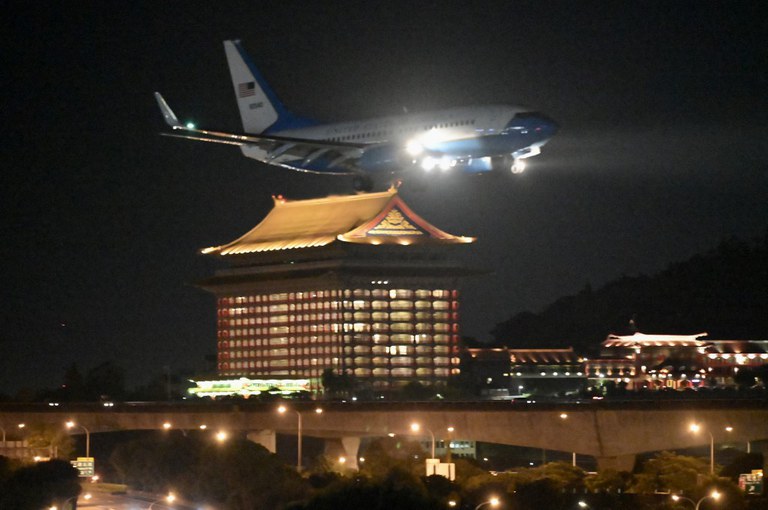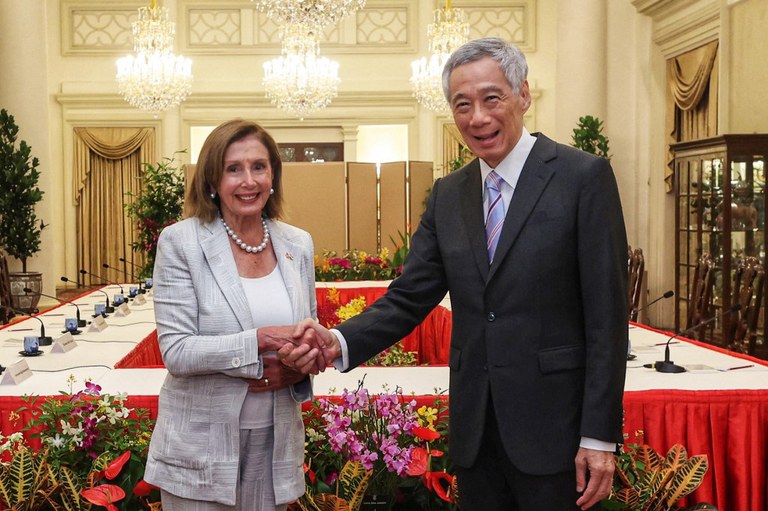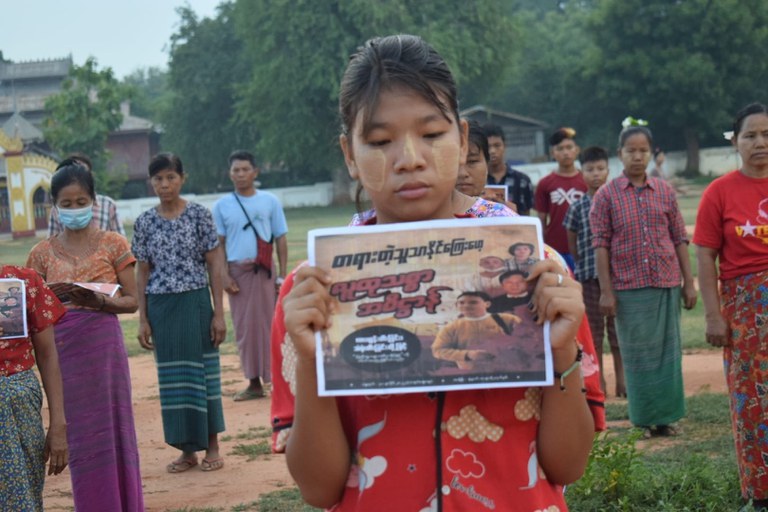
Pelosi visit renews debate of self determination of Taiwan
Lawmakers in Taiwan’s Legislative Yuan expressed cross-party support for U.S. House of Representatives Speaker Nancy Pelosi’s visit, rejecting threats from Beijing amid an ongoing debate on the democratic island about the strength of its ties with the United States. Opposition Kuomintang lawmaker Chiang Wan-an said Beijing, which announced live-fire military exercises on the eve of Pelosi’s arrival, has no right to prevent sovereign countries from having international visitors. “The Republic of China is a sovereign and independent country,” Chiang said, using the formal name of Taiwan’s government that dates back to the 1911 revolution under Sun Yat-sen. “Congress in particular represents the people, so there are mutual visits,” he said. “Such an overreaction by the Chinese Communist Party (CCP) is unnecessary.” “We also hope that the relevant parties can guard against the escalation of military tensions around Taiwan,” Chiang said. Ruling Democratic Progressive Party (DPP) lawmaker Lo Chih-cheng said Pelosi’s visit would significantly boost Taiwan’s faith in the U.S.’ commitment to its security, however, Taiwan’s official Central News Agency (CNA) reported. Chiu Hsien-chih of the New Power Party, said the visit would likely pave the way for the U.S.’ unequivocal support for Taiwan in the future, the agency said. But Chieh Chung, an associate researcher at Taiwan’s National Policy Research Foundation, warned of possible incursions by Chinese military aircraft during Pelosi’s visit. “Sending planes into Taiwan’s airspace will cause even more conflict,” Chieh told. “I think the CCP’s purpose is to make a strong impression on Taiwan and the area around it, not to actually create conflict [but] to make the situation very tense with a high-intensity show of force.” “But the purpose will probably be a show of force or the threat of it,” he added. A U.S. military aircraft with US House Speaker Nancy Pelosi on board prepares to land at Songshan Airport in Taipei on August 2, 2022. Credit: AFP Missile launches possible Chieh said regular incursions were likely across the median line of the Taiwan Strait, particularly at its narrower sections. “July, August and September usually see intensive periods of advanced tactical training for the CCP army, so they may just adjust the timing of some exercises,” Chieh said. “At the same time, we could see a large-scale missile test launch, even of DF-17, YJ-21 or DF-21D anti-ship missiles, which could be tested on sea targets,” he added. He said the main concern was the threat of military accidents or miscalculations sparking full military conflict. “Accidents are a concern when you have such a high density of military activities in the same area,” Chieh said. “Any unexpected incident could cause a sudden and rapid escalation in the situation, which could even trigger an unexpected military conflict.” “That’s what we should be most worried about right now.” Kuan-ting Chen of the Taiwan Next-Gen Foundation think tank, said there is an ongoing debate within Taiwan about how best to win greater international recognition and participation in the face of the threat of Chinese invasion. Chen said that China’s military expenditure has jumped from about 80 billion yuan in the late 1980s to 1,476 billion yuan in 2022, an 18-fold increase. “There will be a debate within Taiwan about how to ensure peace in the Taiwan Strait and the stability of the government regardless of the circumstances,” Chen told. “[It’s about] ensuring that there are no changes to the living standards, economy or political life because of [tensions with China],” he said. Widespread public support Associate professor Huang Kui-po of Taiwan’s National Chengchi University said Pelosi’s visit seems to have garnered fairly widespread public support in Taiwan, despite the military threats from Beijing. “The reason for the support is that Congress is an elected body, and the representatives of the people from both Taiwan and the United States should visit each other,” Huang said. “Another faction believes that Pelosi’s visit to Taiwan may raise tensions in the Taiwan Strait,” he said. “But tensions are going to rise sooner or later; there could be a ripple effect.” Much of the public debate appears to be around a lack of certainty that the U.S. would commit to a full-scale military involvement in Taiwan’s defense, should China invade. The Taiwanese Public Opinion Foundation found in an April 2022 poll that a majority of 53.8 percent of Taiwanese adult do not believe there will be a U.S. military intervention in the event of a Chinese invasion, while only 36.3 percent said they believe there would be. Paul Huang, research fellow at the Taiwanese Public Opinion Foundation, wrote in a recent op-ed article that public confidence in U.S. military support had “decisively turned skeptical” following the lack of intervention in Ukraine following the Russian invasion. “The lack of a direct US military intervention to help Ukraine (despite all kinds of military and non-military aid, intelligence sharing, and other assistance) had a major impact on the Taiwanese public’s confidence in U.S. military intervention and drove a significant number, as much as a quarter of the Taiwanese, toward non-confidence,” Huang wrote for Inkstick Media. Meanwhile, the majority of the Taiwanese public has been very sympathetic toward Ukraine and is highly supportive of Western-led sanctions against Russia, Huang wrote. A majority of supporters of President Tsai Ing-wen’s ruling Democratic Progressive Party (DPP) do believe in U.S. intervention, while 70 percent of “government workers” who include those on active military service don’t, Huang said, citing recent polls. Punishing Taiwan, not the US Yujen Kuo of Taiwan’s Institute for National Policy Research said any meeting between Pelosi and Tsai will be of “great historic significance” for many in Taiwan, however. “So far, the White House and the State Department have been quite cautious, but Pelosi visiting Taiwan will set a new paradigm,” Kuo said. But he warned that any response from China will likely seek to punish Taiwan rather than the U.S. “I worried about [Chinese] military exercise around the median line of the Taiwan Strait, because this has never happened before, and if a large…







